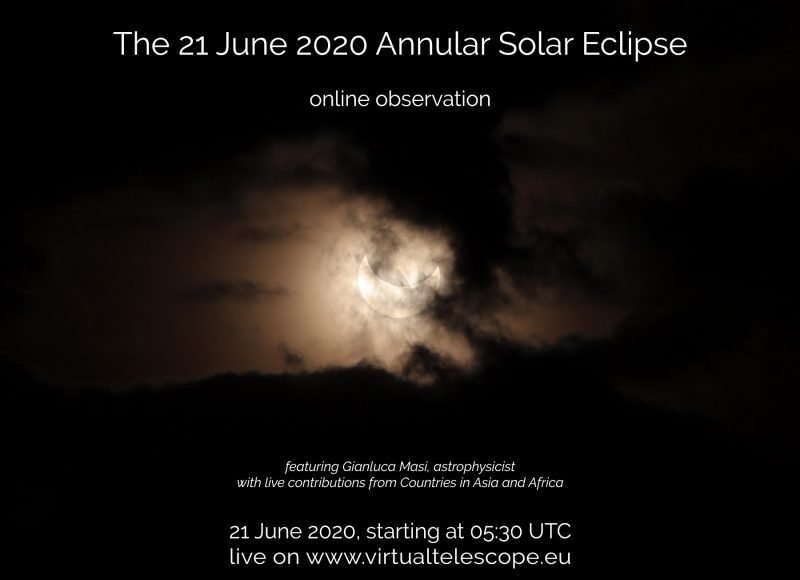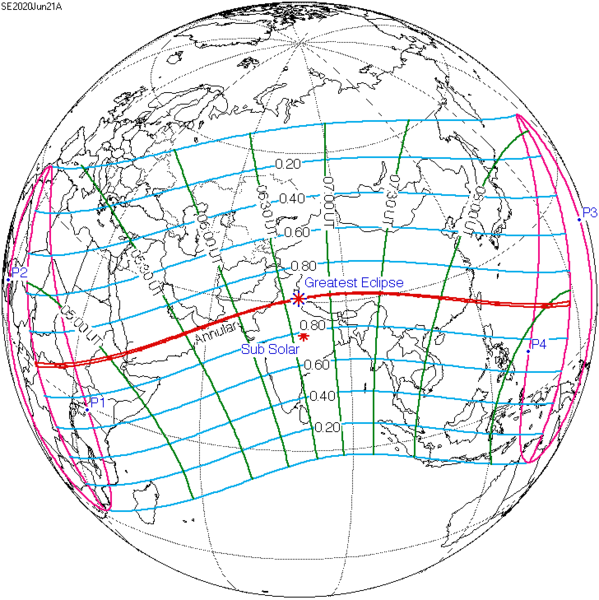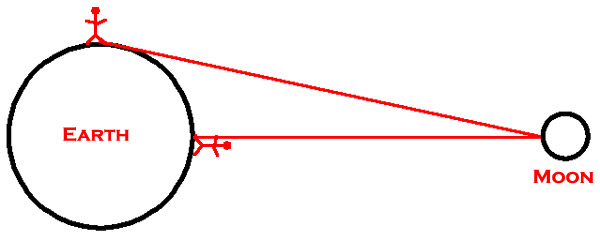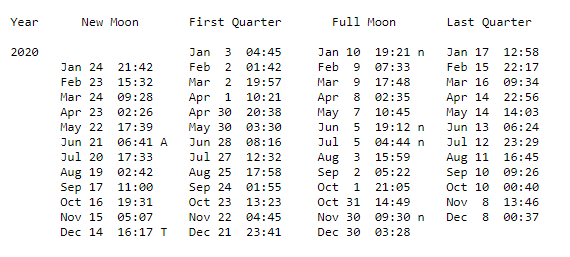
In June 2020, the moon turns new fewer than nine hours after the June 20 solstice. This new moon will sweep right in front of the sun on Sunday, June 21, 2020, to stage an annular – ring of fire – solar eclipse for a narrow but long slice of the world’s Eastern Hemisphere. A much larger swath of Earth will see varying degrees of a partial solar eclipse.
Read more: June 20 marks the middle of an eclipse season
We in the Americas won’t be able to view this solar eclipse at all. It’ll happen during nighttime hours for us on the night of June 20 (early morning of June 21). By the time the sun rises over the Americas on June 21, the eclipse will be long over. Yet, we in the Americas have a slight chance of catching a very young moon – an exceedingly slim crescent, visible only shortly after sunset – on the evening of June 21.
Read more: Young moon after sunset June 22, 23 and 24, 2020.
Also, if the weather holds in various parts of Africa and Asia, it’ll be possible to watch the eclipse online via the Virtual Telescope Project. Gianluca Masi of Virtual Telescope is putting together an international team of observers along various parts of the eclipse path. Note that, for observers in the Americas, the eclipse will take place during the night of June 20. See the poster below, and find details of Virtual Telescope’s eclipse livestream here.

If you are watching the eclipse in your sky, proper eye protection must be used throughout the entire June 21 solar eclipse. That’s because an annular eclipse is, essentially, a partial eclipse. Like a total eclipse of the sun, the new moon will move directly in front of the sun. Unlike a total solar eclipse, the new moon during an annular eclipse is too far away to cover the solar disk completely. At mid-eclipse, an annulus – or thin ring – of the sun’s surface will surround the new moon silhouette. Important reminder: No matter where you are, use proper eye protection at all times during the June 21 solar eclipse!
Read more: Top 7 tips for safe solar eclipse viewing

We refer you to the worldwide map and animation below. The long, skinny annular eclipse path in red will swing a solid 1/3 the way around the world, but spans only 53 miles (85 km) at its widest point. Although the entire annular eclipse on a worldwide scale lasts for about 3 3/4 hours, the maximum length of the annular eclipse at any one place is only 1 minute and 22 seconds.
The annular eclipse starts at sunrise in Africa, and then – some 3 3/4 hours later – ends at sunset over the Pacific Ocean. Greatest eclipse will take place at the border of India, Nepal and China. There, the path width shrinks to a minimum of 13 miles (21 km) with annularity lasting a scant 38 seconds.
View an interactive map of the annular eclipse path via Hermit Eclipse


On a worldwide scale, the partial solar eclipse starts about one hour before the annularity first begins, and ends about one hour after the annular eclipse comes to an end. Here are the eclipse times on a worldwide scale in Universal Time (UTC):
Partial solar eclipse first begins: 03:46 UTC on June 21, 2020
Annular eclipse first begins: 04:48 UTC on June 21, 2020
Greatest or maximum eclipse: 06:40 UTC on June 21, 2020
Annular eclipse finally ends: 08:32 UTC on June 21, 2020
Partial solar eclipse finally ends: 09:34 UTC on June 21, 2020
Local eclipse times for your part of the world
To find out the local eclipse times for your time zone (no conversion is necessary):
Search for a location via TimeandDate.com eclipse map
Eclipse times for hundred of cities via EclipseWise.com
Why is the annular eclipse so short at greatest eclipse?
Along the annular eclipse path, the duration of annularity is greatest at the path’s beginning (just after sunrise) and ending (just before sunset). The duration is the least at the “greatest” eclipse (at and near noon).
The annular eclipse is 1 minute 22 seconds at the beginning of the eclipse path, and 1 minute and 17 seconds at the end. Midway through the path, at the greatest eclipse, the annular eclipse is only 38 seconds long.
Keep in mind that when the moon is nearer the horizon, it is farther away from where you reside on the Earth’s surface than when the moon is high overhead. Because the moon is relatively close to Earth while the sun resides so far away, the apparent size of the moon changes appreciably during the day whereas the sun’s apparent size does not.

If this annular eclipse takes place near the horizon, at early morning or late afternoon, then the smaller moon takes more time to cross the solar disk, resulting in a longer annular eclipse.
On the other hand, if the annular eclipse takes place at or around noon, the closer and larger moon takes less time to cross the solar disk, resulting in a shorter annular eclipse.
Exactly six lunar months (six new moons) after this annular eclipse, there’ll be a total eclipse of the sun on December 14, 2020. The new moon will be closer (and therefore larger) than during the June 2020 annular eclipse, so it’ll be a total solar eclipse instead. Yet, the moon will still be more distant (and smaller) at the beginning and the end of the worldwide path of the total solar eclipse, and closer (and larger) at the middle of the path. So it’ll be a shorter total solar eclipse at the beginning and ending of the eclipse path, but a longer total solar eclipse near the middle.

Bottom line: If you live in the world’s Eastern Hemisphere, you might be in a position to watch the annular solar eclipse on June 21, 2020. If so, please remember to use proper eye protection. Eclipse times, links and viewing charts here.











